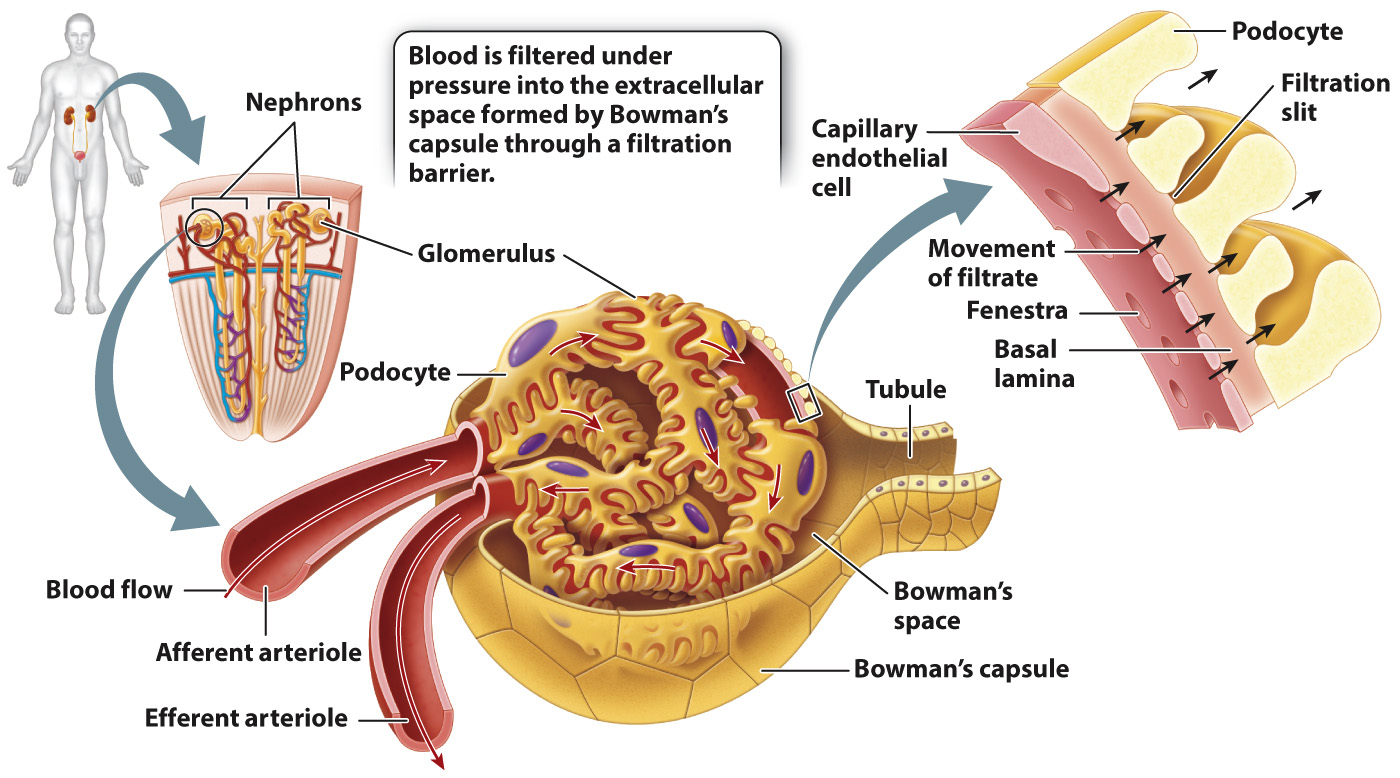Glomerular filtration isolates wastes carried by the blood along with water and small solutes.
The glomerulus is a tuft of capillaries, with blood entering by an afferent (“toward”) arteriole and leaving by an efferent (“away”) arteriole (Fig. 41.16). The tuft of capillaries is encased in a membranous sac called Bowman's capsule, and the space enclosed by the capsule is called Bowman’s space. Blood is filtered as it passes through the tuft of capillaries. Water, wastes, and solutes from the blood pass through the capillary wall into Bowman’s space.

To filter the blood, the capillaries of the glomerulus have a different structure from that of capillaries elsewhere in the body. The cells that line the capillaries, known as endothelial cells, have pores called fenestrae (which means “windows”) that allow fluid to pass through. The filtration barrier of the glomerulus is made up of three layers (Fig. 41.16): the endothelial cells, a basal lamina, and a layer of cells with footlike projections called podocytes, which loosely interlock to create slits in the cell layer. These three layers together create a filter that allows small molecules to pass through but blocks the passage of large proteins and cells, leaving them in the blood. As a result, wastes such as urea, as well as water and solutes such as electrolytes, glucose, and amino acids, all end up in the filtrate. After passing into Bowman’s space, the filtrate enters the renal tubule.